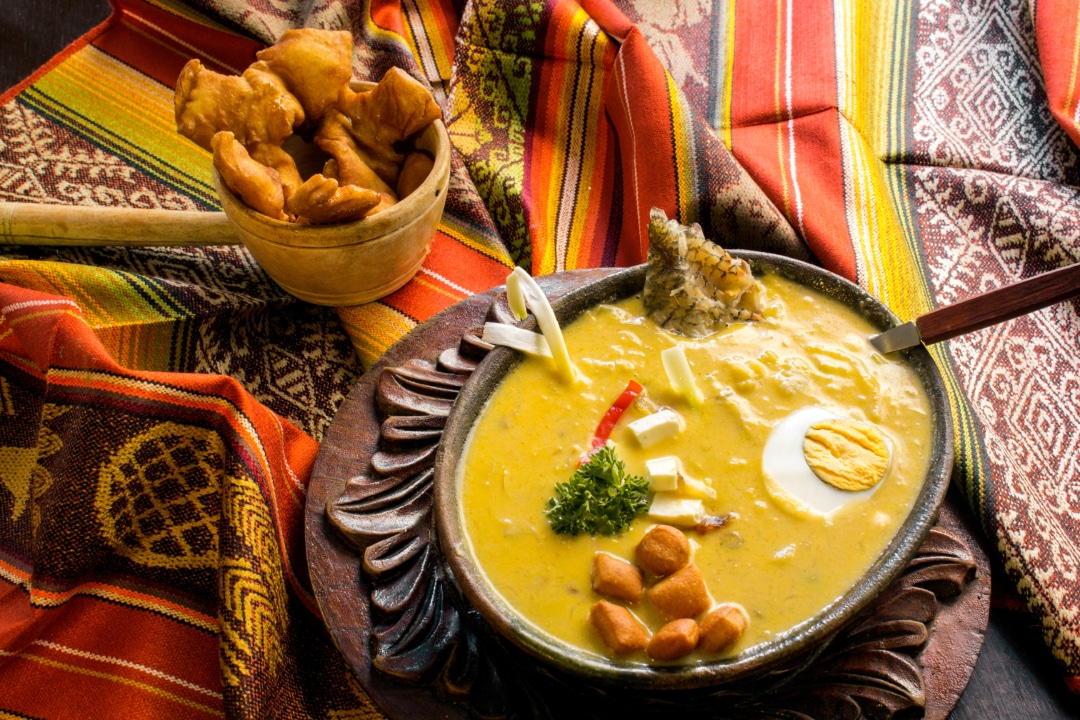masaharusato.com – Ecuadorian cuisine is a vibrant tapestry of flavors, ingredients, and culinary techniques that reflect the country’s rich cultural heritage and diverse geography. From the coastal lowlands to the high Andean valleys and the Amazon rainforest, Ecuador’s varied landscapes have shaped a unique gastronomic tradition that is both hearty and sophisticated.
The Influence of Geography
Ecuador’s cuisine is heavily influenced by its geographical diversity. The country is divided into four distinct regions: the coastal region, the Andean highlands, the Amazon basin, and the Galápagos Islands. Each region has its own set of ingredients and cooking styles, contributing to the overall richness of Ecuadorian cuisine.
Coastal Delights
The coastal region is known for its seafood, with dishes like ceviche, encocado (a coconut-based seafood stew), and arroz con mariscos (rice with seafood) being popular. The use of plantains, corn, and tropical fruits is also prevalent, adding a sweet and savory balance to coastal dishes.
Andean Heartiness
In the Andean highlands, the cuisine is characterized by hearty stews, soups, and grilled meats. Ingredients such as potatoes, quinoa, and corn are staples, reflecting the indigenous influence. Traditional dishes like llapingachos (fried potato cakes with cheese) and cuy asado (grilled guinea pig) are must-tries for visitors.
Amazonian Exoticism
The Amazon region offers a more exotic culinary experience, with dishes featuring ingredients like yuca, exotic fruits, and game meats. The use of spices and herbs from the rainforest adds unique flavors to Amazonian cuisine.
Traditional Dishes and Ingredients
Ecuadorian cuisine is built around a few key ingredients and dishes that are emblematic of the country’s culinary identity.
Corn and Plantains
Corn and plantains are used in various forms across Ecuadorian cuisine. They can be found in dishes like humitas (corn dumplings), tamales, and bolones (fried plantain balls stuffed with cheese or meat).
Seafood and Meats
Seafood plays a significant role in coastal cuisine, while the Andes offer a variety of meats, including beef, pork, and the traditional cuy (guinea pig). The Amazon region introduces exotic meats like alligator and armadillo to the culinary repertoire.
Street Food Culture
Ecuador’s street food scene is vibrant and varied, offering everything from empanadas and salchipapas (a mix of fries and sausage) to fresh fruit juices and ice creams. Street food is an excellent way to sample a wide range of Ecuadorian flavors in one go.
The Future of Ecuadorian Cuisine
As Ecuadorian cuisine gains international recognition, chefs are experimenting with traditional recipes, incorporating modern techniques and international influences. This fusion of flavors is creating new culinary experiences that honor the country’s rich gastronomic heritage while pushing the boundaries of what Ecuadorian cuisine can be.
In conclusion, Ecuadorian cuisine is a testament to the country’s cultural diversity and geographical richness. Whether you’re savoring the fresh seafood of the coast, the hearty stews of the Andes, or the exotic dishes of the Amazon, Ecuador’s culinary landscape offers a feast for the senses that is both comforting and adventurous.
